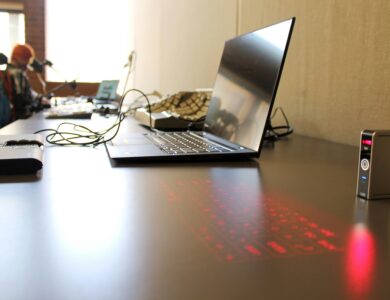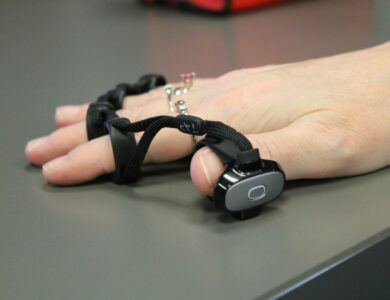
The internet has been a transformative force in our lives, reshaping the way we communicate, work, and entertain ourselves. One of the most groundbreaking developments in recent years has been the rise of the Internet of Things (IoT). This technology connects everyday devices to the internet, allowing them to send and receive data. From smart homes to wearable devices, IoT is changing how we interact with the world. In this article, we’ll explore the various ways IoT is shaping our lives today under four sub-headings: Smart Homes, Wearable Technology, Connected Cars, and Smart Cities. We’ll conclude with a reflection on the future potential and challenges of IoT.
1. Smart Homes: Convenience and Efficiency
One of the most visible applications of IoT is in smart homes. Imagine waking up to a coffee maker that starts brewing your morning cup as soon as your alarm goes off. Or coming home to a house that automatically adjusts the temperature and lights based on your preferences. These conveniences are made possible by IoT-enabled devices connected to the internet.
Smart home systems can include everything from smart thermostats and lights to security cameras and door locks. These devices can be controlled remotely via smartphone apps, offering homeowners greater convenience and control. For instance, you can check your security cameras from anywhere in the world or adjust your home’s thermostat while on vacation.
Beyond convenience, IoT devices in smart homes can also improve energy efficiency. Smart thermostats can learn your schedule and adjust heating and cooling accordingly, saving energy when you’re not home. Similarly, smart lighting systems can turn off lights in empty rooms, reducing electricity consumption. These features not only make life easier but also contribute to a more sustainable lifestyle.
2. Wearable Technology: Health and Fitness Tracking
Wearable technology is another area where IoT has made a significant impact. Devices like smartwatches and fitness trackers are now commonplace, providing real-time data on various aspects of our health and well-being. These wearables connect to the internet and sync with apps on our phones, offering insights into our daily activities, heart rate, sleep patterns, and more.
For fitness enthusiasts, wearable devices can track workouts, count steps, and monitor calorie intake, helping them stay on track with their fitness goals. For those with health conditions, wearables can monitor vital signs and alert them to potential issues. For example, some smartwatches can detect irregular heartbeats and notify the wearer to seek medical attention.
The convenience of having health and fitness data at our fingertips has made wearables increasingly popular. They not only help individuals stay informed about their health but also encourage healthier lifestyle choices. As technology advances, wearable devices are becoming more sophisticated, offering even more detailed health insights.
3. Connected Cars: Enhancing the Driving Experience
The automotive industry is another sector being revolutionized by IoT. Connected cars use IoT technology to communicate with other vehicles, traffic systems, and even your smartphone. These cars are equipped with sensors and software that collect and transmit data, enhancing the driving experience in various ways.
One of the most notable features of connected cars is their ability to provide real-time traffic updates. By accessing internet data, these cars can suggest alternate routes to avoid traffic jams, saving drivers time and reducing fuel consumption. Additionally, connected cars can offer advanced safety features like collision detection, lane departure warnings, and automatic emergency braking.
Another exciting development in this field is the rise of autonomous vehicles. While fully self-driving cars are still in development, many vehicles already offer semi-autonomous features like adaptive cruise control and parking assistance. These innovations are making driving safer and more convenient, with the potential to reduce accidents and make transportation more efficient.
4. Smart Cities: The Future of Urban Living
As IoT technology continues to evolve, it is also transforming urban environments into smart cities. Smart cities leverage IoT devices and data analytics to improve infrastructure, enhance public services, and create a better quality of life for residents. From smart traffic lights that reduce congestion to sensors that monitor air quality, the possibilities are vast.
One of the key benefits of smart cities is improved public safety. IoT-enabled surveillance cameras and emergency response systems can help law enforcement agencies respond more quickly to incidents. Additionally, smart streetlights can adjust their brightness based on pedestrian and vehicular traffic, improving visibility and reducing energy consumption.
Another important aspect of smart cities is waste management. IoT sensors can monitor the fill levels of garbage bins and optimize waste collection routes, reducing costs and environmental impact. Similarly, smart water and energy meters can provide real-time data on consumption, helping residents and businesses reduce their usage and lower their bills.
The data collected by IoT devices in smart cities can also be used to improve urban planning. For instance, data on traffic patterns can help city planners design more efficient roadways and public transportation systems. This data-driven approach can lead to more sustainable and livable cities.
Conclusion
The Internet of Things is undeniably shaping our lives in profound ways. From the convenience of smart homes and the health benefits of wearable technology to the enhanced driving experience of connected cars and the transformative potential of smart cities, IoT is making the world more connected and efficient. However, this rapid expansion of connected devices also raises important questions about privacy and security. As we continue to embrace the benefits of IoT, it is crucial to address these challenges to ensure a safe and sustainable future. The internet has brought us to the cusp of a new era, and IoT is leading the way in transforming how we live, work, and interact with our world.




